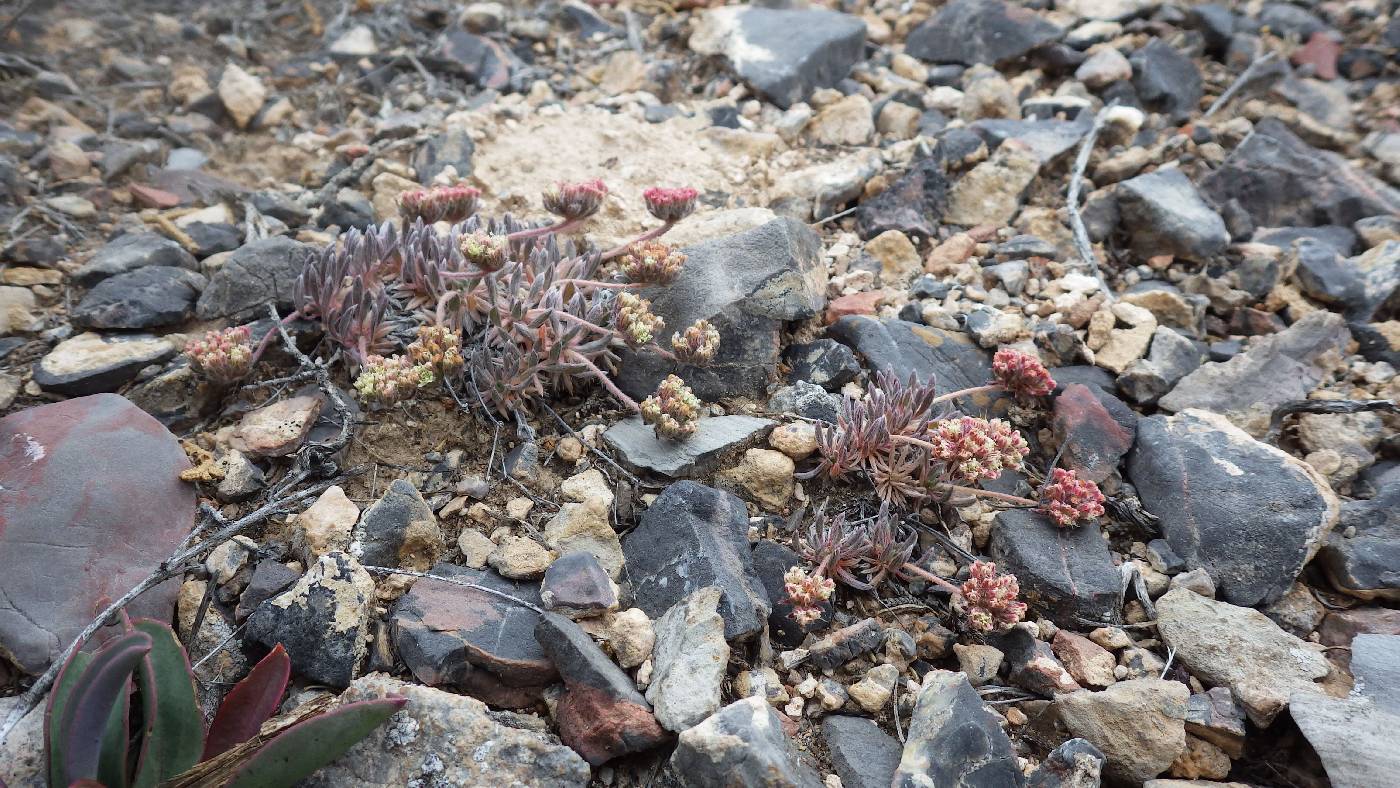Polygonaceae
|
Polygonaceae |
|
|
Trees, shrubs, vines, or herbs, perennial, biennial, or annual, homophyllous (heterophyllous in some species of Polygonum), polycarpic (rarely monocarpic in Eriogonum); roots fibrous or a solid or, rarely, chambered taproot, rarely tuberous. Stems prostrate to erect, sometimes scandent or scapose, solid or hollow, rarely with recurved spines (some species of Persicaria), glabrous or pubescent, sometimes glandular; nodes swollen or not; tendrils absent (except in Antigonon and Brunnichia); branches free (adnate to stems distal to nodes and appearing to arise internodally in Polygonella); caudex stems (subfam. Eriogonoideae) tightly compact to spreading and at or just below the soil surface or spreading to erect and above the soil surface, woody; aerial flowering stems prostrate or decumbent to erect, arising at nodes of caudex branches, at distal nodes of aerial branches, or directly from the root, slender to stout and solid or slightly to distinctly fistulose, rarely disarticulating in ringlike segments (Eriogonum). Leaves: deciduous (persistent in Coccoloba and sometimes more than 1 year in Antigonon, Eriogonum, Chorizanthe, and Polygonella), basal or basal and cauline, rosulate, mostly alternate, infrequently opposite or whorled; stipule (ocrea) absent (subfam. Eriogonoideae, possibly vestigial in some perennial species of Chorizanthe) or present (subfam. Polygonoideae), persistent or deciduous, cylindric to funnelform, sometimes 2-lobed (Polygonum), chartaceous, membranous, coriaceous or partially to entirely foliaceous; petiole present or absent, rarely articulate basally (Fagopyrum, Polygonella, Polygonum), rarely with extrafloral nectaries (Fallopia, Muehlenbeckia); blade simple, margins entire, occasionally crenulate, crisped, undulate, or lobed, rarely awn-tipped (Goodmania). Inflorescences terminal or terminal and axillary, cymose and dichotomously or trichotomously branched, or racemose, umbellate, or capitate (subfam. Eriogonoideae; or spikelike, racemelike, paniclelike, cymelike, or, rarely, capitate (subfam. Polygonoideae), comprising simple or branched clusters of compound inflorescences; bracts absent (subfam. Polygonoideae), or 2-10+, usually connate proximally or to 1/ 2 their length, rarely perfoliate, foliaceous or scalelike, margins entire, sometimes awn-tipped (subfam. Eriogonoideae, rarely absent in Eriogonum), glabrous or pubescent; peduncle present or absent; clusters of flowers subtended by involucral bracts or enclosed in typically nonmembranous tubular involucres (subfam. Eriogonoideae) or subtended by connate bracteoles forming a persistent membranous tube (ocreola) (subfam. Polygonoideae). Pedicels present or absent, rarely accrescent (Brunnichia), articulate to flowers. Flowers: usually bisexual, sometimes bisexual and unisexual on same or different plants, rarely unisexual only, 1-many, often with stipelike base distal to articulation; perianth persistent, often accrescent in fruit, often greenish, white, pink, yellow, red, or purple, rarely winged or keeled (Fallopia and some species of Polygonum), campanulate to urceolate, sometimes membranous, indurate (Brunnichia and Emex), or fleshy (Coccoloba, Muehlenbeckia, and some species of Persicaria) in fruit, rarely developing raised tubercles proximally (Rumex), glabrous or pubescent, sometimes glandular or glandular-punctate; tepals 2-6, distinct or connate proximally and forming tube, usually in 2 whorls, petaloid or sepaloid, dimorphic or monomorphic, rarely coriaceous (Lastarriaea), entire, emarginate, or lobed to laciniate apically, rarely awn-tipped (Lastarriaea); nectary a disk at base of ovary or glands associated with bases of filaments; stamens (1-)6-9, staminode rarely present; filaments distinct, or connate basally and sometimes forming staminal tube, free or adnate to perianth tube, glabrous or pubescent proximally; anthers dehiscing by longitudinal slits; pistil 1, (rudimentary pistil sometimes present in staminate flowers of monoecious or dioecious taxa), (2-)3(-4)-carpellate, homostylous (heterostylous in some species of Fagopyrum and Persicaria); ovary 1-locular (sometimes with vestigial partitions proximally); ovule 1, orthotropous or, rarely, anatropous, placentation basal or free-central; styles 1-3, erect to spreading or recurved, distinct or connate proximally; stigmas 1 per style, peltate, capitate, fimbriate, or penicillate. Fruits: achenes, included or exserted, yellowish, brown, red, or black, homocarpic (sometimes heterocarpic in Polygonum), winged or unwinged, 2-gonous, 3-gonous, discoid, biconvex, lenticular, rarely 4-gonous or spheroidal, glabrous or pubescent. Seeds 1; endosperm usually abundant, mealy, development nuclear; embryo straight or curved, rarely folded. |
|
